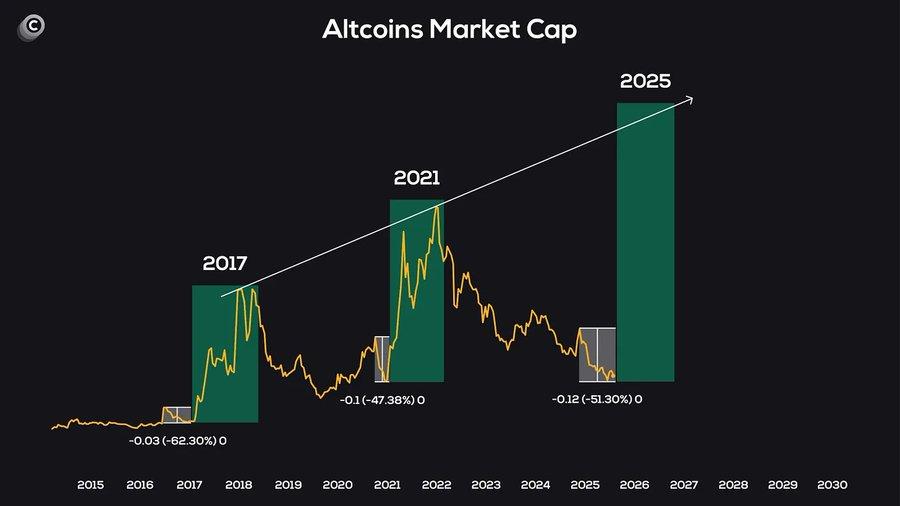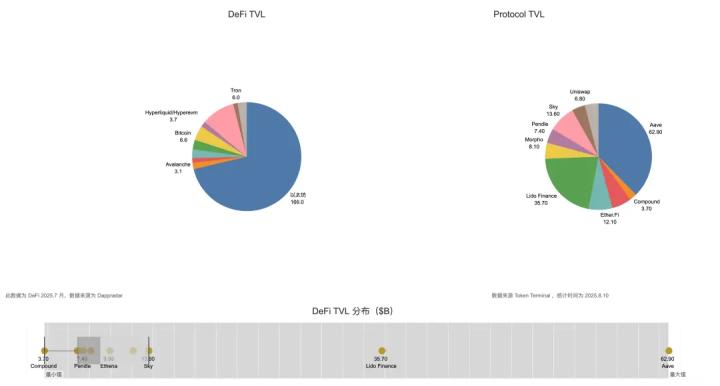Execution operating systems, yield and risk infrastructure, and institutional and automated channels together form the foundation for the next decade of the crypto realm.
Written by: @arndxt_xo
Compiled by: AididiaoJP, Foresight News
Every lasting technological wave begins with chaos.
In the crypto realm, this chaos manifests as an "App Zoo" - a Cambrian explosion of isolated experiments, each with its own token, liquidity island, and user experience threshold. This phase is inevitable, even necessary: it sows the seeds of primitive technology, the market stress-tests ideas, and creates shared code for developers and users.
Today, this technology stack is solidifying into three interconnected layers that will form the foundation of the crypto realm for the next decade:
Execution OSes: Vertically integrated environments where hosting, lending, derivatives, and yield run under one user experience, with L2 and super apps serving as the "operating system" for capital.
Yield & Risk Plumbing: Underlying infrastructure that transforms funding rates, restaking, and real-world yields into clean, composable income streams, packaged as fixed or floating yield products that can be held by both ordinary users and sovereign wealth funds.
Institutional & Agentic Rails: Compliant identity layers, zero-knowledge verification, proof networks, and blockchain platforms oriented towards automation, enabling real capital and round-the-clock automation to coexist in the same liquidity pool.
We are transitioning from a world where users jump between different applications to one where capital exists at the platform layer, with incentives embedded in the operating system. In this model, defense no longer comes from a single killer feature, but from having distribution channels, capital efficiency, and trust infrastructure, with everything else built upon this foundation.
These changes tell us that the crypto realm is maturing, integrating into a comprehensive financial operating system whose potential lies not just in ideology, but in pure, compound utility, thereby transcending the traditional financial system.

If the first week of August tells us anything, it's that the crypto market is no longer defined by short-term traders.
[The rest of the translation follows the same professional and precise approach, maintaining the technical terminology and nuanced language of the original text.]- Pendle Boros: Convert funding rates into tradable units, connecting yield curves between crypto and traditional finance.
- GammaSwap gETH: Delta-neutral ETH exposure, abstracting Impermanent Loss hedging into the token itself.
- Strata Fixed Rate Lending: Allows borrowers and lenders to structurally match terms and overlay rewards.
- Maple syrupUSDC incentives on Kamino: Directly integrating credit market yields with leveraged structured products.
Winner Characteristics:
Expose real non-incentivized yields, allow users fixed or floating rates, cross-chain risk-free arbitrage.
Compliance and Institutions: The Arrival of Privacy-Protected Access
Institutions don't care about meme, governance, or speculative narratives; they care about fulfilling fiduciary duties while unlocking crypto's composability and real-time settlement advantages.
The inflection point now is selective disclosure: systems that allow proving compliance without revealing the full transaction graph. Zero-knowledge proofs, isolated vault logic, and programmable proofs are the building blocks. This architecture enables enterprise treasuries, family offices, and registered investment advisors to enter the DeFi ecosystem while meeting compliance, audit, and regulatory requirements.
Why it's worth investing now:
- Mature infrastructure: ZK proof systems are now performant enough to run proofs in real-time during transaction execution.
- Regulation: EU's MiCA, Hong Kong's SFC VASP regime, and US SEC pilot guidance on non-security staking have opened channels for compliant DeFi.
- Institutional capital: BlackRock's BUIDL and Franklin Templeton's BENJI MMF demonstrate that yield-bearing tokenized products can scale to billions when compliance is guaranteed.
Market warming signals:
- Euler's zkVerified vault (Avalanche): Zero-knowledge proofs controlling institutional deposits issued via Keyring.
- Theo's thBILL: On-chain institutional-grade money market fund, fully KYC while maintaining DeFi composability.
- Spout: Tokenizing US bonds and ETFs on KYC-permissioned L1 (Pharos Network), merging traditional finance yields with DeFi composability.
Proofs, MEV, and Trust Unbundling
We are witnessing two foundational layers of blockchain economics: proof generation and block space value extraction (MEV) being decoupled from a single protocol stack. These two functions are being commoditized at the compute layer but remonetized at the distribution layer.
Results:
- Proof generation becomes a low-margin commodity, with differentiation in integration depth and SLA guarantees.
- MEV capture shifts from opaque miner and validator profits to explicit protocol-structured income sharing, transforming AMMs into predictable cash flow tools.
Why it matters now:
- Rollup explosion: Over 50 Rollups are in development, each requiring high-throughput ZK/STARK proofs.
- MEV regulatory risks: OFAC and EU focus on transaction ordering drives transparent, auction-based MEV capture.
Unbundling signals:
- Succinct's Prover Network: Tokenized economy + staking, providing deterministic proof SLAs for Rollups.
- Angstrom v1: Redirecting arbitrage value to LPs and traders through off-chain auctions.
Stablecoins, Points, and Loyalty: From Acquisition Tactics to Balance Sheet Items
Points programs in DeFi initially were an acquisition tactic, attracting short-term trading volume and TVL by real-time emission adjustments. However, without economic sedimentation and redemption mechanisms, these points cannot anchor enterprise value.
The next phase is treating points as quasi-loyalty liabilities, managed like airline miles: issuance plans, redemption models, and liability rolling tables. For stablecoin issuers, points can significantly impact float stickiness and velocity, directly affecting reserve net interest margins.
The billion-dollar opportunity lies in loyalty middleware, infrastructure managing issuance, redemption, and cross-chain optimization. Whoever builds the Web3 "airline miles clearinghouse" will own the channel between stablecoin float and long-term user loyalty.
Why it matters now:
- Stablecoin competition intensifies: Over $160 billion in stablecoins in circulation, with issuers competing for wallet share.
- Capital becomes more behavior-sticky: Rewards programs valuing hold time, usage frequency, and integration breadth can double user LTV.
Transformation signals:
- WLFI USD1 points program: Expanding from exchange integration to staking, DeFi usage, and application participation.
- Noble Season 2: Explicitly allocating token supply to points holders.
Automated Agents: The Next Dominant User Category
In the next 18-24 months, automated agents will likely surpass user wallets in transaction volume, becoming the largest "user group". These agents are not single-strategy bots, but multi-domain participants executing across trading, lending, yield farming, governance, and multi-chain.
Product interfaces must shift from human dashboards to machine-first APIs with embedded functionality. Humans will define strategies, but 99% of execution will be automated.
Why it's happening now:
- Mature infrastructure: High-throughput L2s like zkSync and Starknet enable near-deterministic transactions.
- Account abstraction: ERC-4337 makes permissions, spending limits, and multi-site whitelists programmable.
Market formation signals:
- Heurist Chain: L2 on zkSync, designed specifically for agents.
- INFINIT's IN token: Embedding attention economy into protocol economics.
RWA and Credit: Hybrid Yields Become the New Normal
The next growth vehicle for crypto fixed income is not "pure" DeFi or "pure" traditional finance, but hybrid yields, combining BTC/ETH-denominated income streams from funding, basis, CeFi arbitrage, and real-world cash flows. The packaging itself is the product: daily liquidity, transparent risk ladders, and rational redemption management.
Market signals:
- Solv BTC+: BTC-denominated multi-strategy vault.
- OpenEden/Resolv dual yield pool: Combining RWA yields and native crypto staking rewards.
Future category winners are hybrid yield aggregators: transparent strategy portfolios, programmable redemption controls, and "BTC/ETH yield funds" distributed through wallets, exchanges, and custodians. This is not "DeFi yield farming v2", but building the BlackRock iShares of crypto fixed income, with composable on-chain distribution channels.







